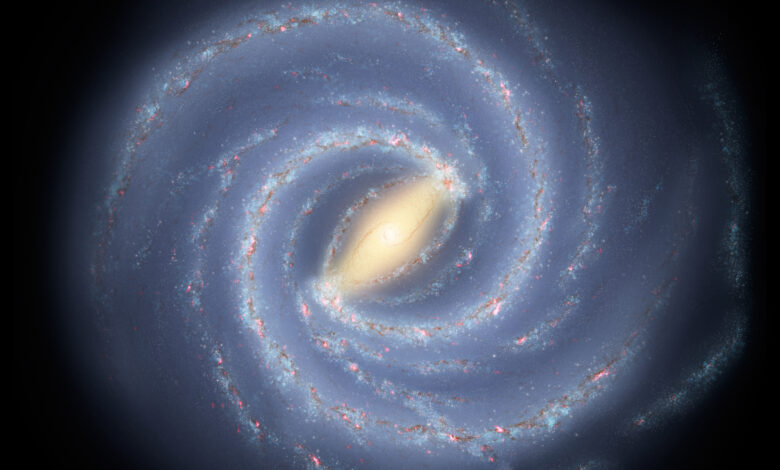Study unravels an astronomy puzzle

A joint team of scientists from India and the US have decoded the source of a mysterious super hot gas that is found around the Milky Way, our home galaxy.
As it is there is more gas than stars in our galaxy. It is the main source for the formation of stars in our galaxy. Besides, a few decades ago, studies also established the presence of a sphere of gaseous matter surrounding our galaxy. It was a few million degrees Kelvin hot. It extended to 700 thousand light years. Such a high temperature is considered by scientists to be due to the gravity of the Milky Way – atoms in the gaseous sphere would have to constantly swirl around in order to save themselves from falling prey to the galaxy’s strong gravity and thus remain hot..
Recently, scientists have discovered more gaseous matter around the milky way that is far more hot. The temperatures of the material is estimated to be around 10 million degrees Kelvin. Faint X-ray emissions have been found in all directions of the Milky Way that bore strong signatures of the super-hot gas. Interestingly, this gas also showed up in the spectra of at least three distant quasars. But, as an absorbing medium.
Scientists at the Raman Research Institute (RRI), a Bengaluru-based autonomous institute funded by the Department of Science and Technology (DST), along with their collaborators at Indian Institute of Technology (IIT) – Palakkad and Ohio State University, have now got some new insights on it.
They have found that the gas formation that was responsible for emitting the faint X-ray and that is seen as an absorbing medium in the three distant quasars are of different nature. Their studies showed that the X-ray emitting hot gas was caused by the explosion of massive stars around the stellar disc of the Milky Way. The explosions kept heating up the gas floating around the disc of the Milky Way.
The phenomenon of absorbing gas, in turn, seemed to be happening when some runaway stars ejected by the Milking Way exploded as supernovae while hovering above the stellar disc. The researchers have come to this conclusion as the gas found to be enriched with large quantities of alpha-elements, such as sulphur, magnesium, neon etc., whose nuclei are nothing but multiples of helium nuclei. They have surmised that the atoms in the hot gas absorbed and produced shadow signals as and when they fall in line with the direction of distant sources of light quasars.
The study was conducted by Biman B. Nath, Yuri Shchekinov, and Mukesh Singh Bisht of Raman Research Institute, Projjwal Banerjee of Indian Institute of Technology (IIT) – Palakkad, and Smita Mathur of the Astronomy Department of Ohio State University. They have published two papers on their findings in the Astrophysical Journal of American Astronomical Society, one on the emitting gas and another for the absorbing hot gas.




